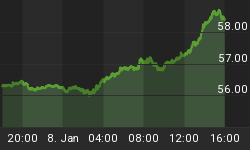Organizations behind lab-grown diamonds continue to push to conquer the market.
As miners of the precious stones are struggling across the board, particularly those unearthing cheaper and smaller gems where there is too much supply, companies producing synthetic diamonds are expanding their reach by incorporating consumer feedback into their manufacturing and commercialization processes.
According to Chris Casey, president of the New York-based Lab Grown Diamond Council or LGDC, compliance with labour and environmental standards are consumers’ top concerns when purchasing any kind of gemstones and other products. This is why his organization decided to commission third-party SCS Global Services to create a sustainability standard for the industry, which should be ready in about six months.
“Today’s younger consumers want insight into the sourcing of virtually every product they purchase. When it comes to lab-grown diamonds, they are asking retail sales associates whether they are ‘eco-friendly’ or ‘sustainable’,” Casey told MINING.com. “The challenge is that these terms are currently unsubstantiated.”
The LGDC says that research shows that over 80% of Millennials and other consumers will buy products that are independently verified for environmental and social product attributes
The executive explained that those terms are not necessarily correct when referring to any product in his field, which is said to be more carbon-intensive than the diamond mining industry. In his view, the lack of clear guidelines is one of the things that have prompted the misuse of such descriptors and, therefore, the misleading of consumers.
To avoid deceitful advertising, the US Federal Trade Commission asked the industry to remove the words ‘eco-friendly’ and ‘sustainable’ when marketing lab-grown stones and, in response to the warning, the LGDC saw the urgency of commissioning the guidelines.
“The development of a fully certified sustainability standard will help put an end to such incorrect assumptions and descriptions,” Casey said. Related: Why Investors Shouldn't Ignore Gold Stocks
The leader of the trade organization explained that the development of the certification standards will be informed by government regulations and definitions, environmental and social responsibility conformance, and an understanding of the manufacturing process and supply chain of lab-grown diamonds. It will also incorporate input from researchers, producers, retailers and customers.
Once the guidelines are ready, members of the industry wanting to get the certification will have to go through a comprehensive assessment of the lab-grown diamond production process, compliance auditing, diamond testing, and traceability evaluation. Each phase will be looked at taking into account how it addresses environmental stewardship and climate neutrality, social responsibility, and economic viability.
“Typically, the certification process will involve documentation review, on-site inspections, physical testing, interviews, and supply chain and traceability assessment. Each producer would demonstrate conformance to all requirements of the standard before being certified,” Casey explained.
Formal roll-out is expected by the beginning of 2020, at which time producers will be eligible to apply. Those who get the certification will be able to use the Sustainably Grown Diamond label in communications to both the trade and consumer markets.
By Mining.com

















